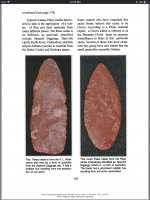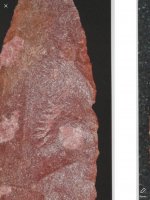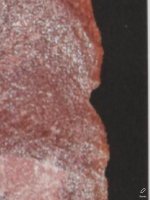Here are photos of mysterious negative split cone flaking, on paleoindian artifacts. Has anyone ever seen it before?
I was told by a lithics researcher that there is no known explanation in modern experimental lithics research that accounts for how this flaking was made. The flaking is denoted by a very small gouge, in the initiation. The gouge almost looks like a tiny chip was knocked out. But, it was part of the flake. They know for sure that a hammerstone did not remove these flakes. They know for sure that a club or billet did not remove these flakes. The flakes are too large to be pressure flakes. So, how were the flakes made? I was told that in experimental archaeology, the only thing that produces this type of negative split cone initiation in the edge is the hard rake of another flake, right on the edge of the point. Such an action does create a similar gouge in the edge. But, it does NOT lead to the removal of a large flake. So, can anyone explain how such flakes were made, and why the gouge? Also, does anyone have examples of these kinds of flake removals in a collection?



See the tiny gouge in the edge? This type of flake removal with the negative split cone initiation is seen in both paleoindian materials, and in early archaic materials. Could this have actually been done with the tip of a deer tine?
It would be great if someone could show an example of this kind of flaking from an artifact.
I was told by a lithics researcher that there is no known explanation in modern experimental lithics research that accounts for how this flaking was made. The flaking is denoted by a very small gouge, in the initiation. The gouge almost looks like a tiny chip was knocked out. But, it was part of the flake. They know for sure that a hammerstone did not remove these flakes. They know for sure that a club or billet did not remove these flakes. The flakes are too large to be pressure flakes. So, how were the flakes made? I was told that in experimental archaeology, the only thing that produces this type of negative split cone initiation in the edge is the hard rake of another flake, right on the edge of the point. Such an action does create a similar gouge in the edge. But, it does NOT lead to the removal of a large flake. So, can anyone explain how such flakes were made, and why the gouge? Also, does anyone have examples of these kinds of flake removals in a collection?



See the tiny gouge in the edge? This type of flake removal with the negative split cone initiation is seen in both paleoindian materials, and in early archaic materials. Could this have actually been done with the tip of a deer tine?
It would be great if someone could show an example of this kind of flaking from an artifact.
Amazon Forum Fav 👍
Last edited:
Upvote
0




